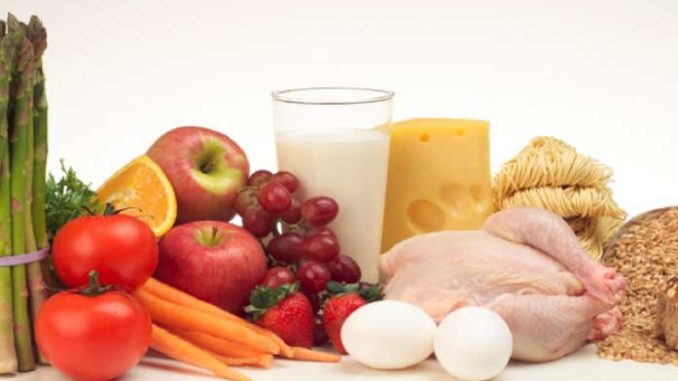
Last week’s grand opening of a 60,000 square foot refrigerated warehouse in Nogales may have been used by Gov. Doug Ducey to celebrate Arizona’s strong trade relationship with Mexico, but it also drew attention to warnings that the retail prices of produce and other food products are going up.
Ducey traveled to the Santa Cruz County border city Wednesday at the invitation of Jaime Chamberlain, president of Chamberlain Distributing which imports fruits and vegetables from northern Mexico. Nearly $16 billion in trade occurred between Arizona and Mexico in 2020, with more than $13 billion of that passing through the Nogales Port of Entry.
However, this month the University of Arizona released its First Quarter 2021 AZMEX report of economic indicators showing the nearly $1.3 billion in fresh produce imports through Arizona’s ports of entry represented a nine percent decrease from the same period in 2020. And that lower supply is going to impact retail food prices across the United States, according to Chamberlain.
Chamberlain noted the company’s new warehouse will help get produce into the United States faster and fresher, but farmers in Mexico are facing a variety of challenges that will boost production costs, something that will be passed along to consumers.
“The drought will curtail planting season and farmers will think twice what they’re able to plant and plant successfully,” Chamberlain explained, adding that higher production expenses for seeds and fuel are also driving up costs for farmers.
Food industry manufacturers have also begun warning consumers of price increases, a probability the U.S. Department of Agriculture first acknowledged in April.
According to the USDA’s Economic Research Service, fresh fruit prices increased nearly three percent from March to April of this year. That increase was on top of a nearly two percent increase earlier this year.
But it’s not only Mexico growers facing challenges, the USDA reported last month.
“Low production in Florida (oranges), California (lemons and navel oranges), and Texas (grapefruits) have tightened citrus supplies and increased prices,” the USDA reported on May 25. The reported added that another 3.5 to 4.5 percent price increase for citrus is expected this year.
A top executive of Hormel Foods Corp. recently said the company’s cost for corn feed jumped 40 percent in the first quarter of 2021. As a result, Hormel is now feeding more soybeans and less corn to its turkeys, according to CFO James Sheehan.
In addition, Hormel has implemented consumer price increases for many of its product lines, including peanut butter. Just as Chamberlain warned last week in Nogales, higher transportation costs faced by manufacturers is adding to price increases already being implemented due to the cost of commodities.
